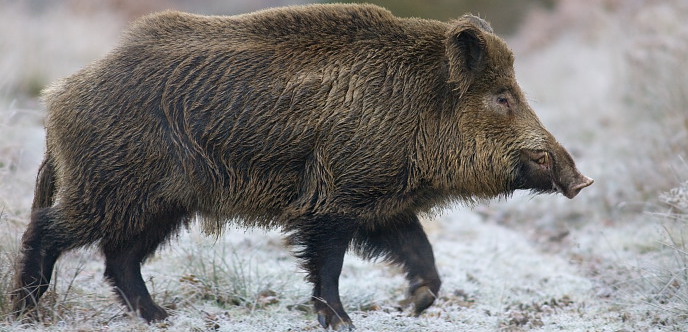In his latest Pig World column, Russian journalist Vladislav Vorotnikov provides a detailed update of the situation with African swine fever in Eastern Europe.
African swine fever (ASF) has, it seems, gone on the offensive this year, with the first cases of the virus recorded in the Czech Republic, Romania and in Siberia.
In Poland, 31 outbreaks among wild boar have been identified to date in 2017, compared with just 23 between 2014 and 2017. And in Latvia, more than 21,000 pigs have been culled this year, 7,000 more than in the previous three years combined.
China crisis?
The discovery of ASF in Siberia might have far-reaching consequences. Since its first outbreak in 2009, Russia had managed to contain the virus within its European region, not allowing it to go east to the lesser-populated regions.
As the territory was ASF-free, pig producers such as RusAgro and Merci Trade established a pork production hub in Primorsky Krai, in the far east of Russia.
The cornerstone of the project was export, including to Japan and India, but primarily to China. The recent Siberian outbreak, however, might now jeopardise trade talks with the Chinese authorities, which reportedly were already going pear-shaped. China is extremely scared about the threat of ASF, so it is unlikely it would allow imports of pork from regions where the disease is raging.
Veterinary scientists from the Russian Research Institute have been sweating on an ASF vaccine since 2009. Working with the University of Illinois, they have developed a vaccine, which they started testing in late 2016. It successfully prevents mortality in pigs, but the animals are still becoming carriers of the virus and can transmit it to the unvaccinated herd.
There are conflicting reports about when the vaccine will be available. The institute has said the first practical results could be seen by 2018. But speaking last year, the institute’s Alexey Sereda predicted ‘there will be no vaccine at least for the coming ten years’ and urged pig farmers ‘to not wait for it’.
There are nine seroimmunotypes of ASF, but existing vaccines can only tackle six of them, Dr Sereda noted. Scientists would be better off concentrating their efforts on the development of new diagnostic and disinfection tools, he suggested.
Are outbreaks being hidden?
Poland has recently approved the construction of a 729km fence along its border with Belarus. Yet, Belarus has not reported any ASF outbreaks in either domestic pigs or wild boars since 2014. So, what’s this about?
Well, after cases were confirmed in 2013, neighbouring countries accused Belarus of attempting to hide them. Ever since, Belarus has been the solitary former Soviet state to defeat the disease with apparent ease.
However, there have been a number of reports of mysterious cases of pig mortality on farms in the country. Local news outlets have described a common scenario whereby farmers discover dead pigs and call in veterinary inspectors, who take samples and cull the pig population a few days after that, without any explanation.
Journalists from the Charter’97 news agency were told that the pigs had died from ‘an unknown infection’.
In this regard, it appears that the story of the struggle against ASF in Belarus might be not as successful as it seems.
Germany next in line?
As for Europe, the Russian veterinary watchdog Rosselkhoznadzor believes ASF will keep moving west via two main pathways. The southerly route, has already seen the virus spread from Ukraine to Moldova. Russian vets believe it could penetrate central Romania, then move to the Balkans, including Bulgaria and Serbia.
On the northern route, now that ASF has been found in the Czech Republic, Rosselkhoznadzor believes, if it gains a foothold, it is likely to head further west, with Germany next in the firing line.




